The story behind ‘Engaging Bereaved Donors’

So why did I write Engaging Bereaved Donors? This is a project I’ve been contemplating for some time and was especially brought into focus during the pandemic lockdowns.
First, a big thank you to those who contributed to the book in so many different ways, from filling in the
research surveys, being interviewed or writing pieces and filling in the history, and of course those who
contributed to the CrowdFunder.
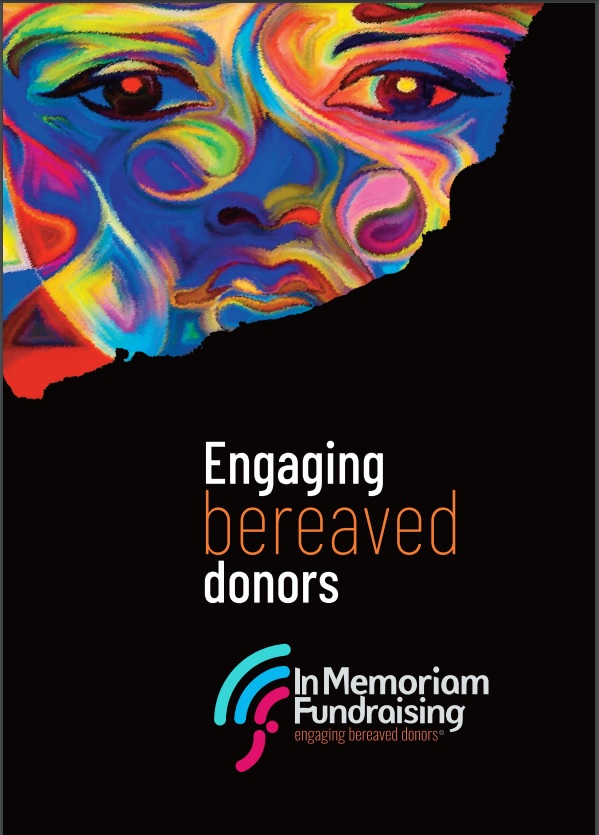
I’ve been delivering training for fundraisers and other charity colleagues for over 15 years in In Memoriam
fundraising (InMem) and while some things in human nature remain the same, the environment in which we live constantly changes and Covid brought this into sharp focus for us all.
Advertisement
Together with UK Fundraising we tried a couple of times to make the Engaging Bereaved Donors training work over Zoom but this proved difficult – the nature of this work means engaging with people’s emotions and this simply proved too difficult to replicate remotely. So that’s why I decided that to spread this knowledge further I should make it more easily available – this book and programme.
This is a very challenging time for fundraising and for charities in general and I fear it’s going to get worse.
- Find the latest UK Fundraising training courses, including Kevin Kibble’s Engaging Bereaved Donors course.
There can be little doubt now that the cost of living crisis is going to impact on a large proportion of the UK population with economists predicting massive rapid falls in discretionary spending by consumers, this will inevitably impact on charity donations.
And for small charities this comes as the longer-term trend for donations is drifting downwards.

Let’s look at income
Although overall charity income for the first six months of 2022 is up by 6% this is mostly due to the large spikes in community and high-value gifts in March as a result of the war in Ukraine. The State of the Sector Report from Wood for Trees also points out that while overall donor recruitment is up on last year, mostly due to a return to direct dialogue recruiting, this has fallen back recently as the cost of living crisis starts to impact – with rising attrition leading to a fall in month-on-month regular giving.
Supporter recruitment
The return of direct dialogue recruitment methods this year has seen a significant rise in the recruitment of regular gift donors, although we see the opposite in other channels such as direct marketing, one-off gifts and digital recruitment.
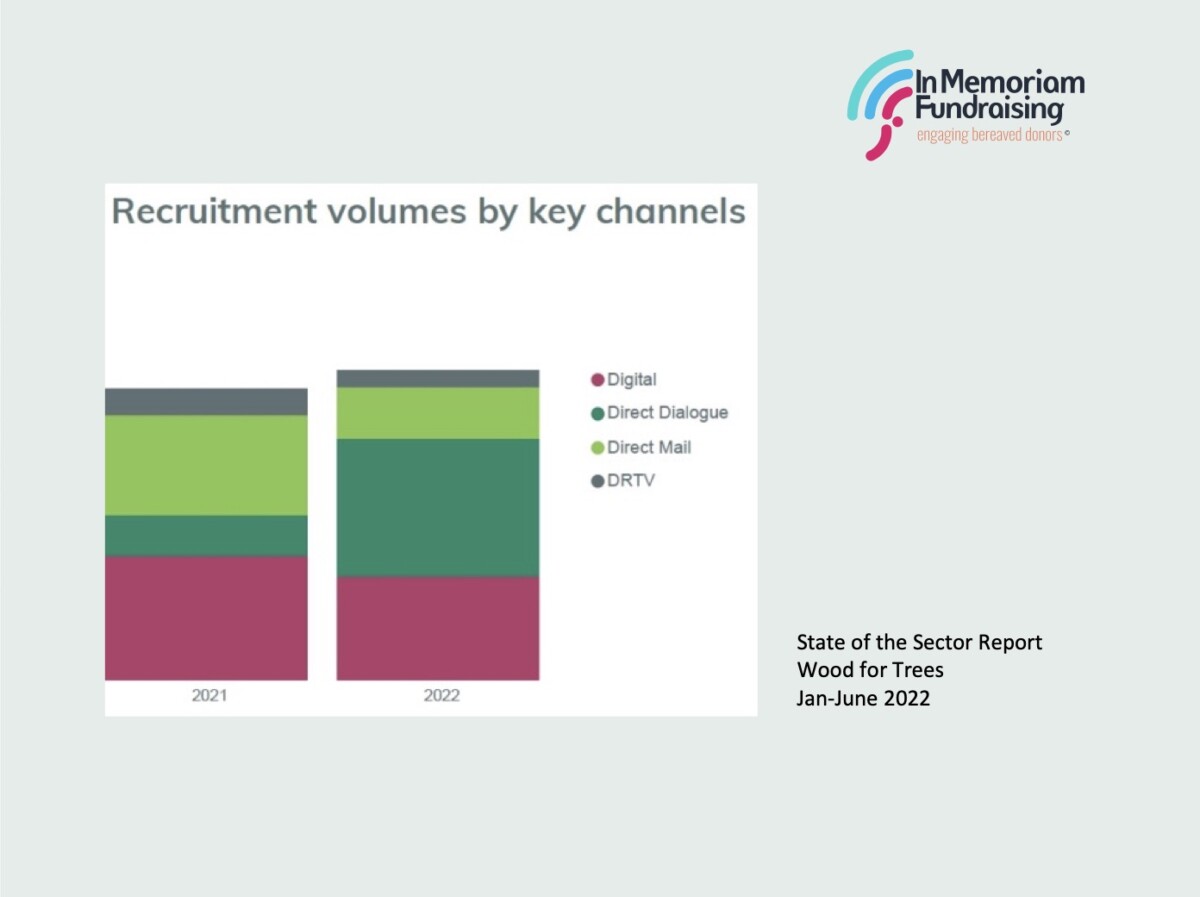
And while we should never read too much into one month’s figures, the drop in June is quite dramatic and according to recent data it would suggest this looks like being the start of a downward trend.
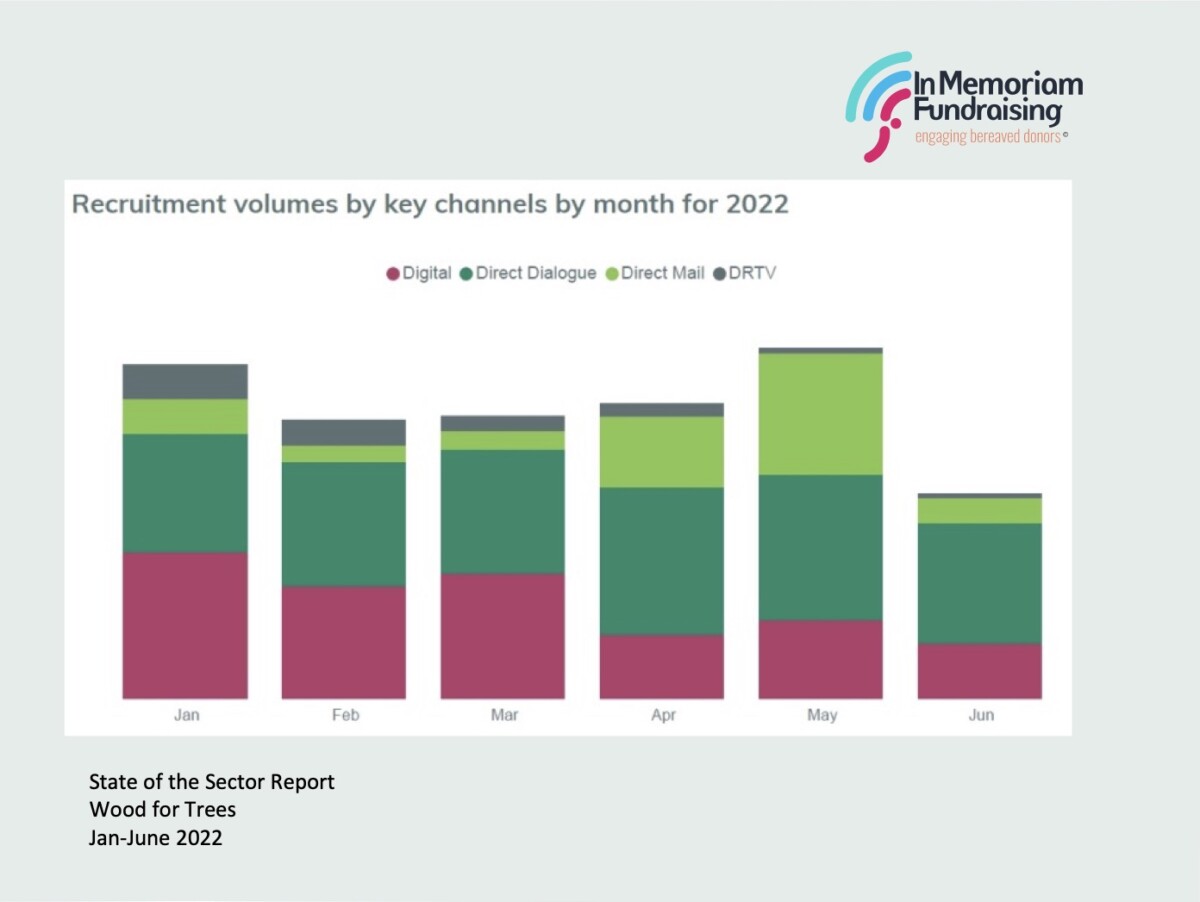
Why does this matter? It matters because the profile of donors being recruited is also changing with an increasing number of younger and less affluent supporters being recruited to our causes.
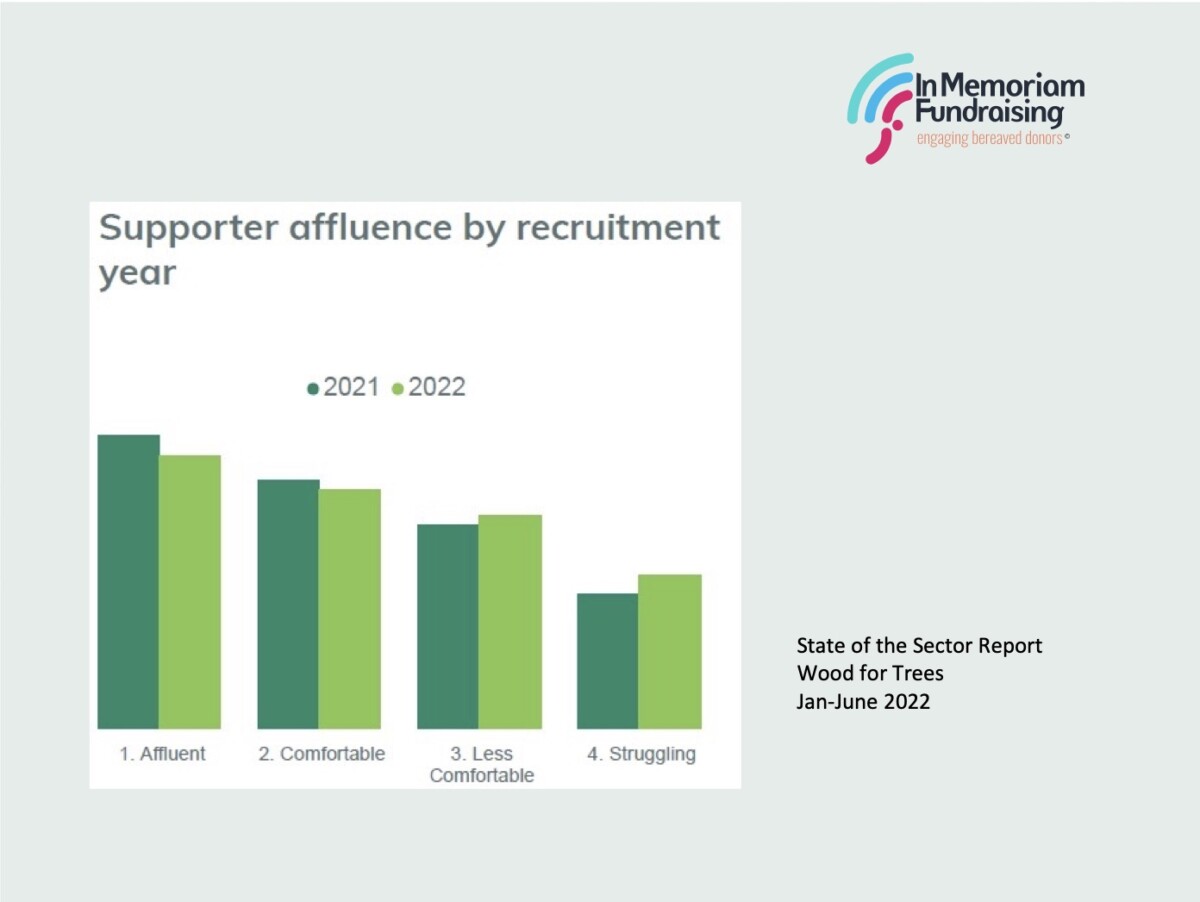
This is in turn leading to a lower life time value (LTV) of our supporters with a six-month LTV down from £55 to £50 as an average of all supporters but, rather alarmingly, a drop from £141 to £89 for community fundraising and from £68 to £50 for one-off donors. The increase in direct dialogue recruited supporters probably accounts for much of the increased attrition among regular donors, up from 22% to 30%.
Against all this worsening outlook, the demand on charity services is increasing, for example animal shelters have never been busier and are under enormous pressure, as are care-based charities and the health sector.
The need for a dependable income source has never been more important as many charities, according to NCVO face possible closure within the next 12 months – and not just small charities.
And now the good news
For InMem and legacy fundraisers people are still dying! Time for us to step up to the plate. The Covid pandemic has had a skewing effect on mortality rates so for the purposes of the book I relied on pre-pandemic figures. The last completed full UK numbers are for 2018.
616,014 people died in the UK in 2018, up by 1.5% on 2017, and with 731,213 being born that year our long-term marketplace is healthy. Now, according to the National Academy of Sciences in the US, this would mean that 5.4 million people are bereaved – 5.4 million fundraising opportunities.
These figures of course don’t include other losses such as the death of a much-loved pet.
It’s not that easy to get hold of figures for an actual size of the market in financial terms, however the lovely people at MuchLoved.com provided us with the following data for 2021:
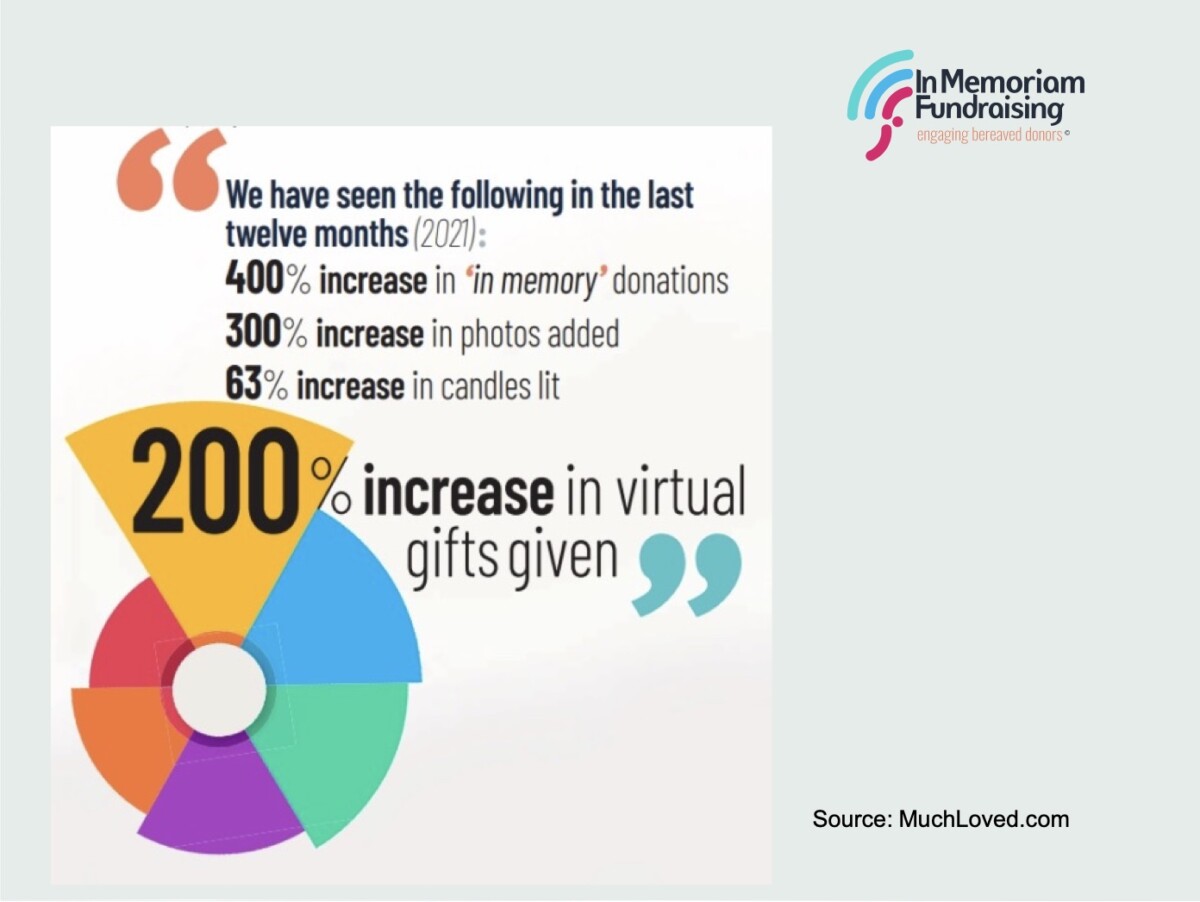
So we can see that despite the impact of the pandemic, InMem income and activity has held up really well, and if we think of this in terms of the research from Legacy Foresight showing that people who have previously given in memory are three times more likely to include the same charity in their wills compared to regular DD or SO donors, we can see the potential for InMem fundraisers. The emphasis on charities to get their InMem income right could not be more pressing or opportune.
However – it’s not that easy. This is a sensitive area of fundraising and one that charities and other non-profits must get absolutely right or risk seriously endangering current or potential future relationships and legacies. One of the essential skills for fundraisers involved in In Memoriam and Tribute fundraising is the ability to talk to bereaved donors.
For many, especially those new to this fascinating area of fundraising, the interaction with families and friends of the deceased can seem daunting, if not positively scary! And yet more and more people are engaging in InMem and tributes to mark the death of someone or something close to them and it’s not always charities that are benefiting!
What the book and training programme aims to cover
Issues covered:
- Bereavement, grief and mourning
- The language people use
- The process and effect of grief
- Sudden and/or traumatic grief
- Dealing with loss and loneliness
- What supports people and what doesn’t
- Trends in memorials
Developing skills:
- Listening and questioning skills
- Keeping boundaries
- Telephone skills
- What bereaved people say helps and what doesn’t
- Devising conversation prompt sheets
- Looking after yourself – not taking emotional matters home
Sample slide from the training programme
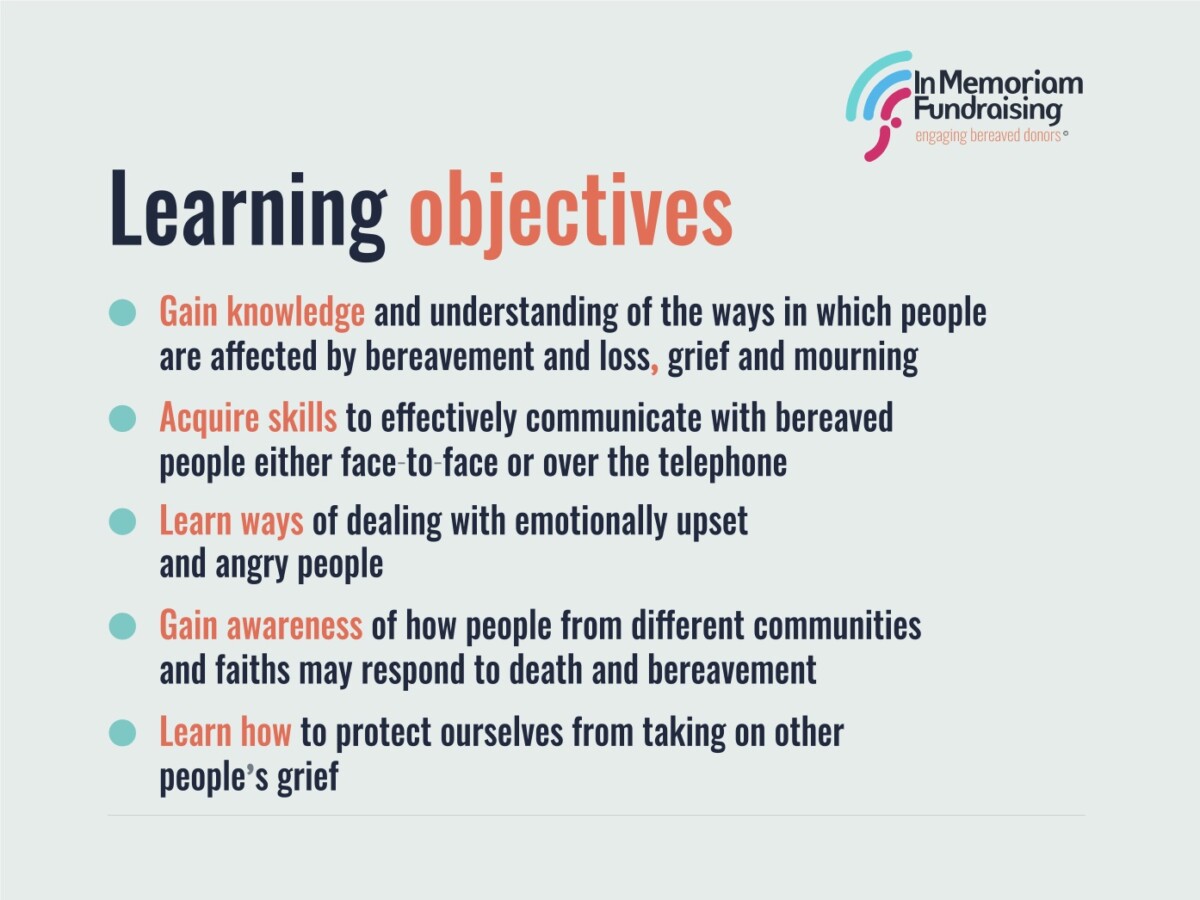
The changing face of InMem
Things I discovered while researching this project made me rethink some preconceived ideas. For example, if we think all young people are digitally focused then we might need to look again at their motivations and expectations when it comes to InMem.
In the book Holly’s story tells of a group of young friends who came together to remember one of their group who had died by suicide. Although the group used a JustGiving page to raise funds, it was not a digital remembrance they had in mind – they wanted to remember their friend in the physical place that meant something to them all – in this case the local park.
It’s worth reading the story to hear the issues they had, but bearing in mind they could have set up something for maybe one of the mental health charities, they decided instead to pay the local council for a memorial bench.
This is something that has increased in popularity over the years and local authorities, even private estates have manged to capitalise on the opportunity to offset ground maintenance costs with funds that might previously supported charities.
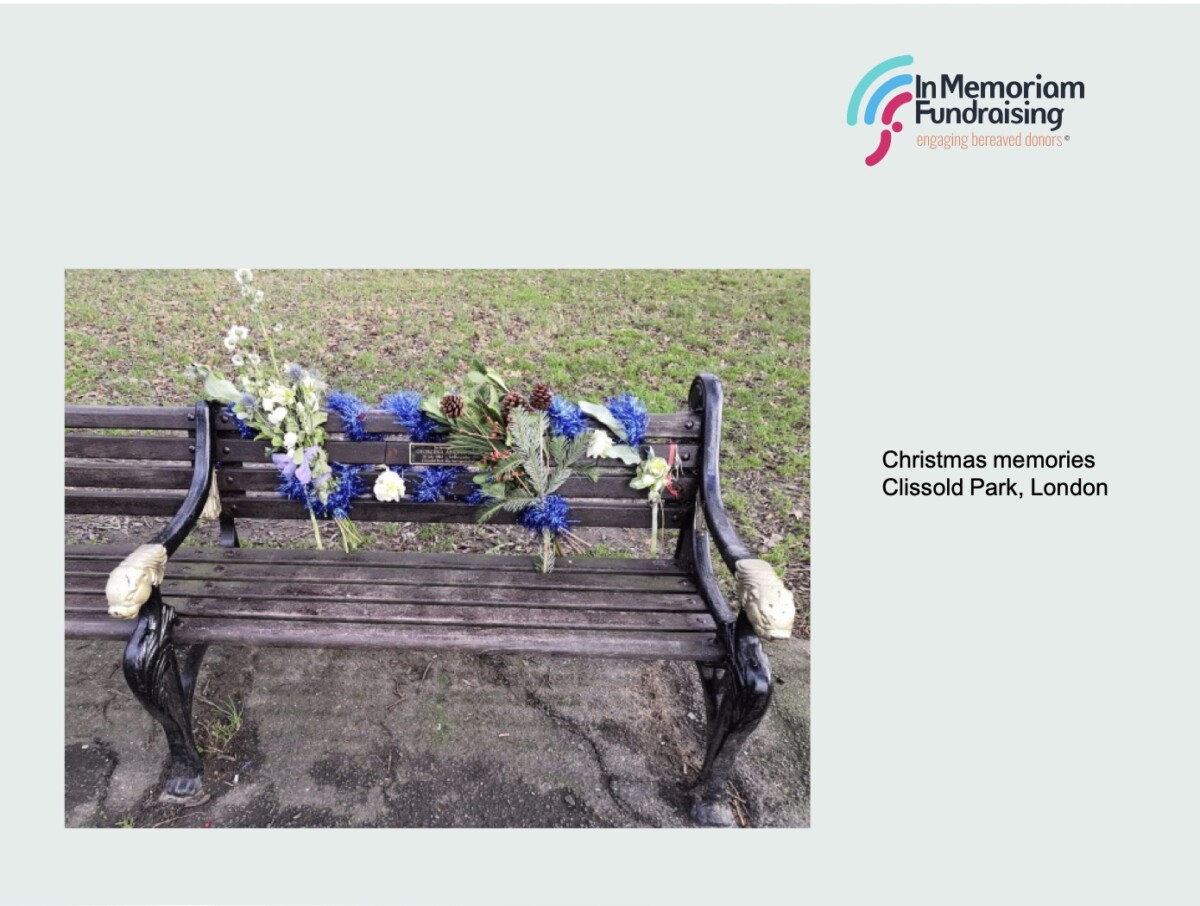
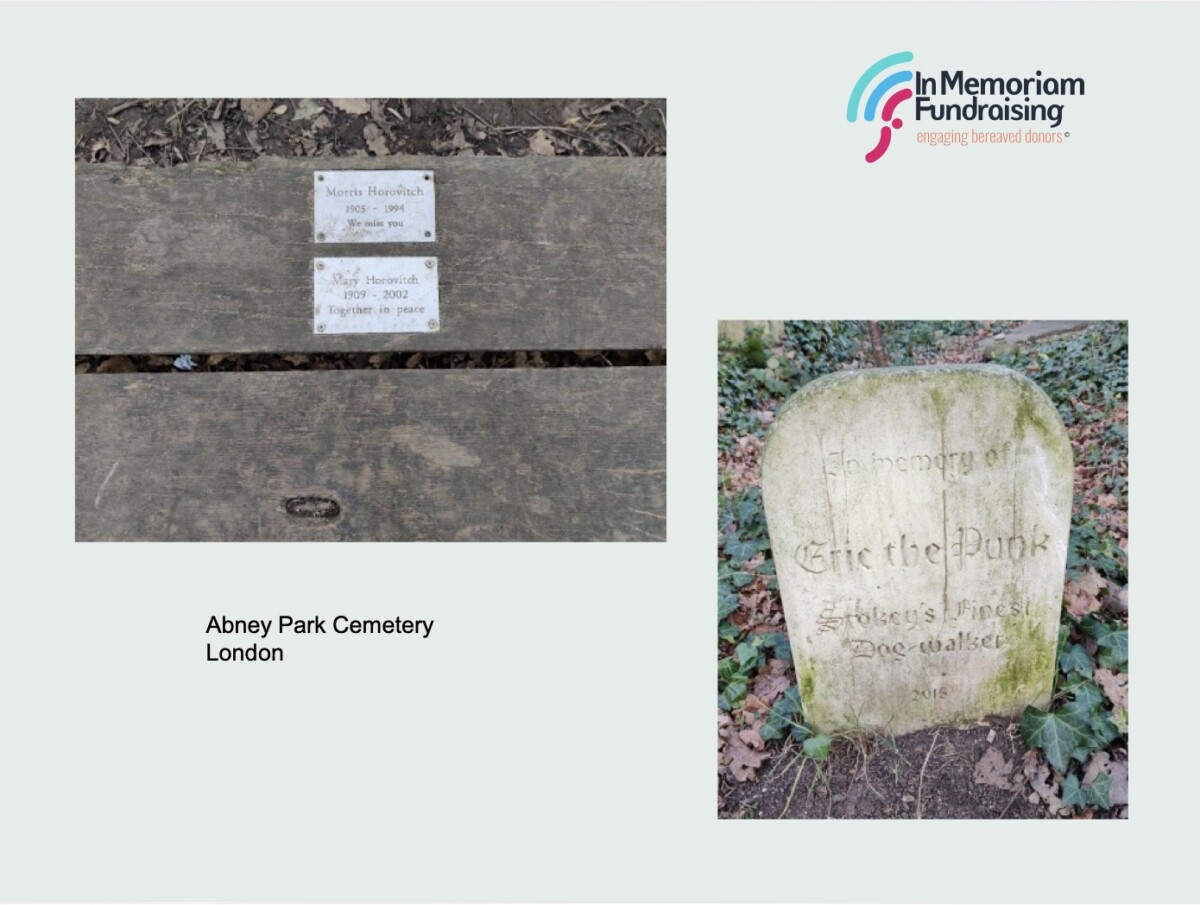
Charities that have the space to include this type of memorial can make serious money – this is from the Natural History Museum:
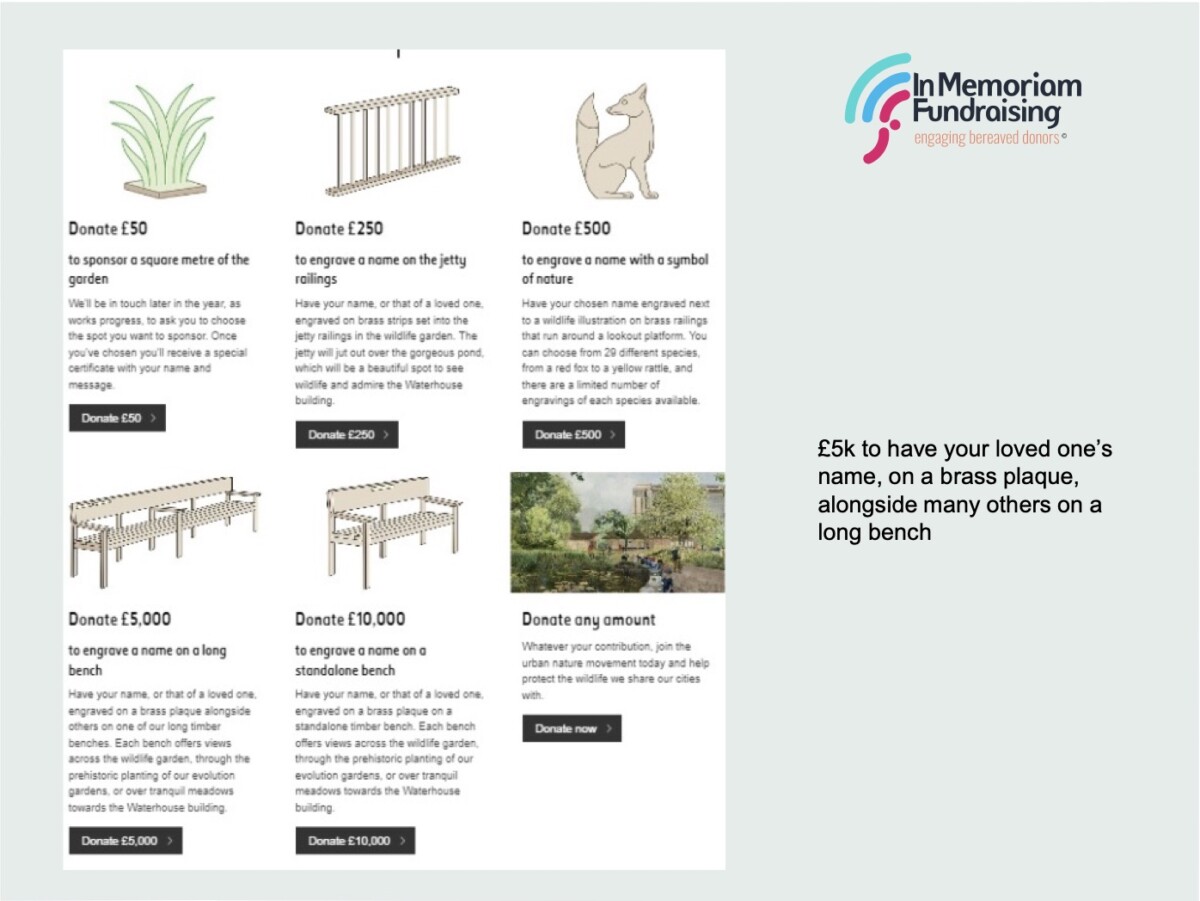
And I like the choices on offer from the RNLI:
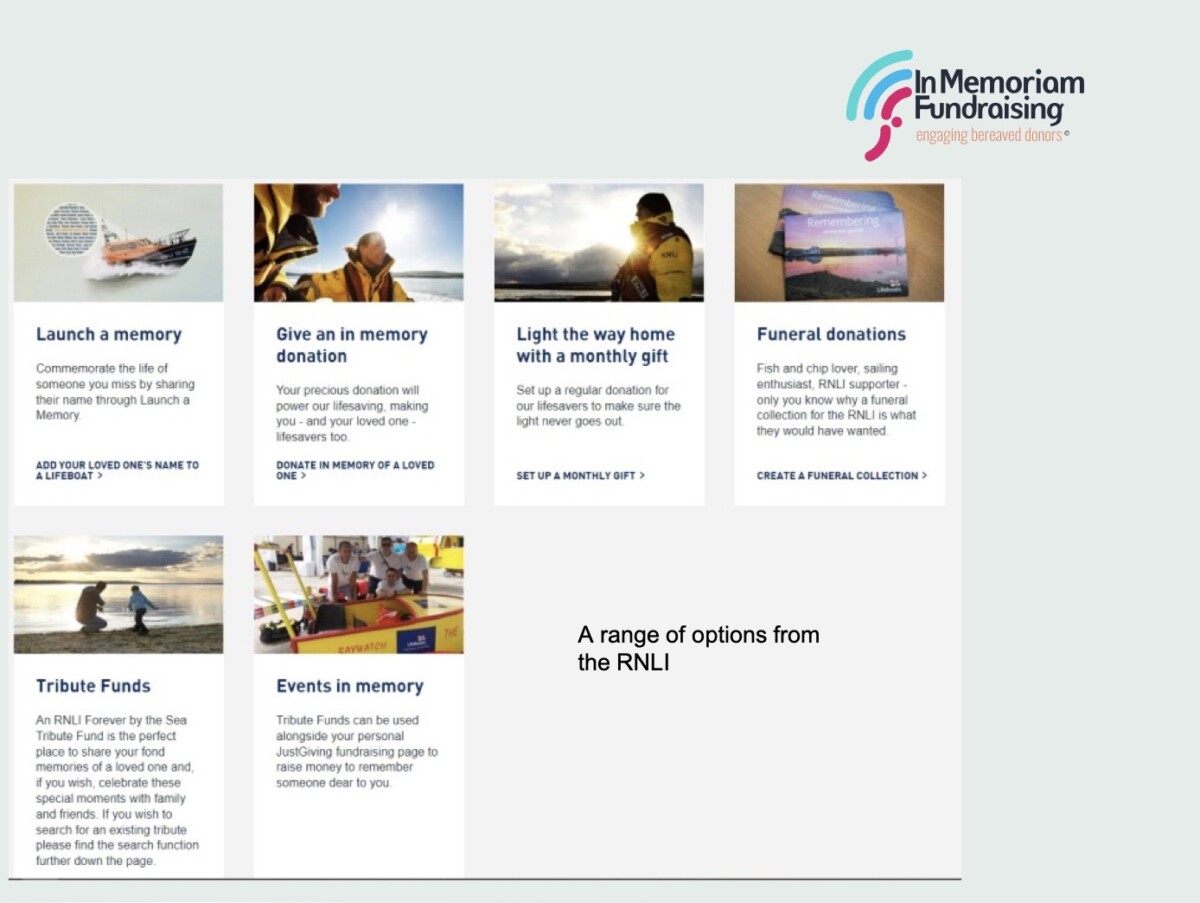
But what about those charities without the opportunity for onsite memorials?
Perhaps working in partnership with the corporate sector may be an option? Whatever your charity’s situation the competition from the corporate and statutory sectors cannot be ignored.
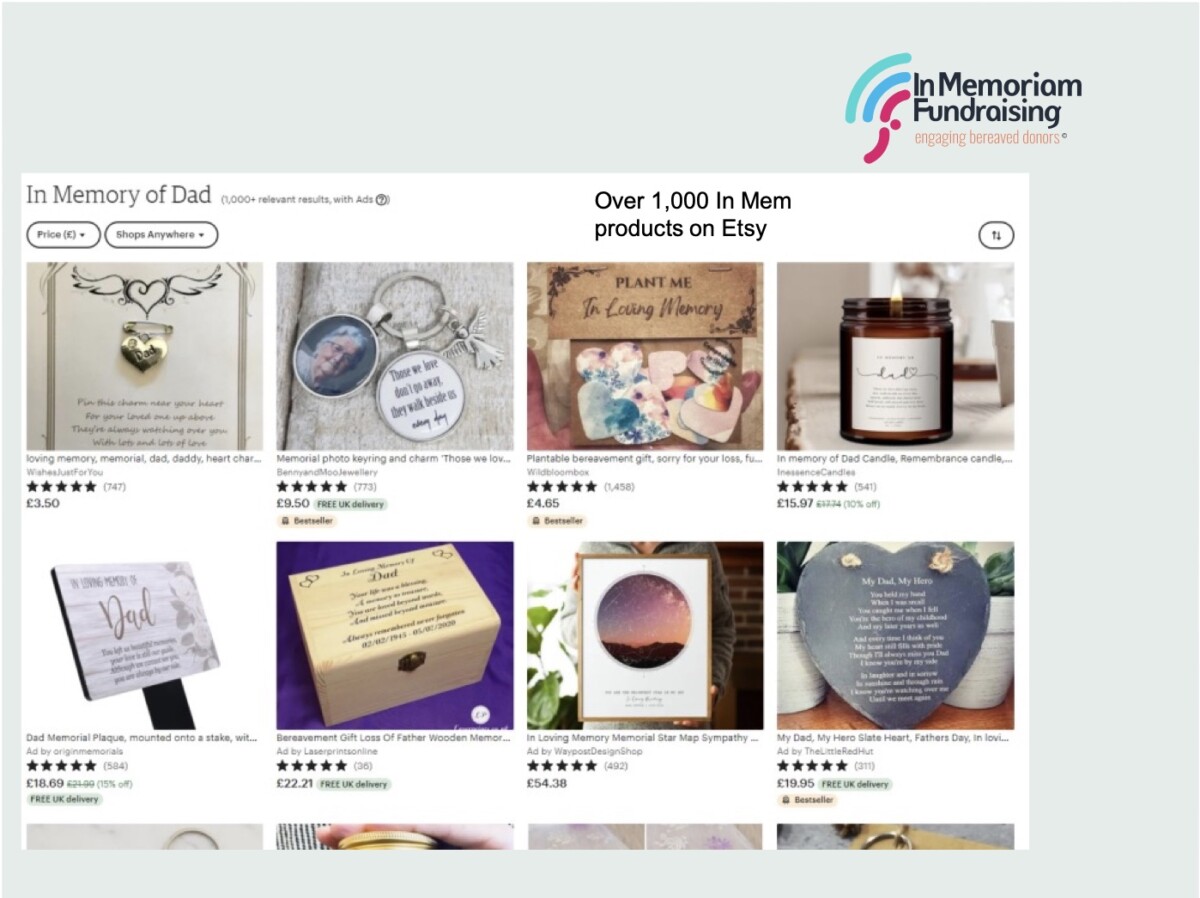
I also wanted to touch on the importance of skilled staff in running In Memory giving programmes, because if you get it wrong, then the results can be awful. In the book I talk about my own experiences but also a story from Sally, an experienced fundraiser trying to create a memorial for her late mother.
I’ll let you read the story for yourself – but the upshot is how an entire family is now alienated from the charity in question and you can bet the story and conversations about it don’t stop just with family members. Given that we know the propensity for InMem donors to go on to be legators this is a long-term fundraising and reputational disaster.
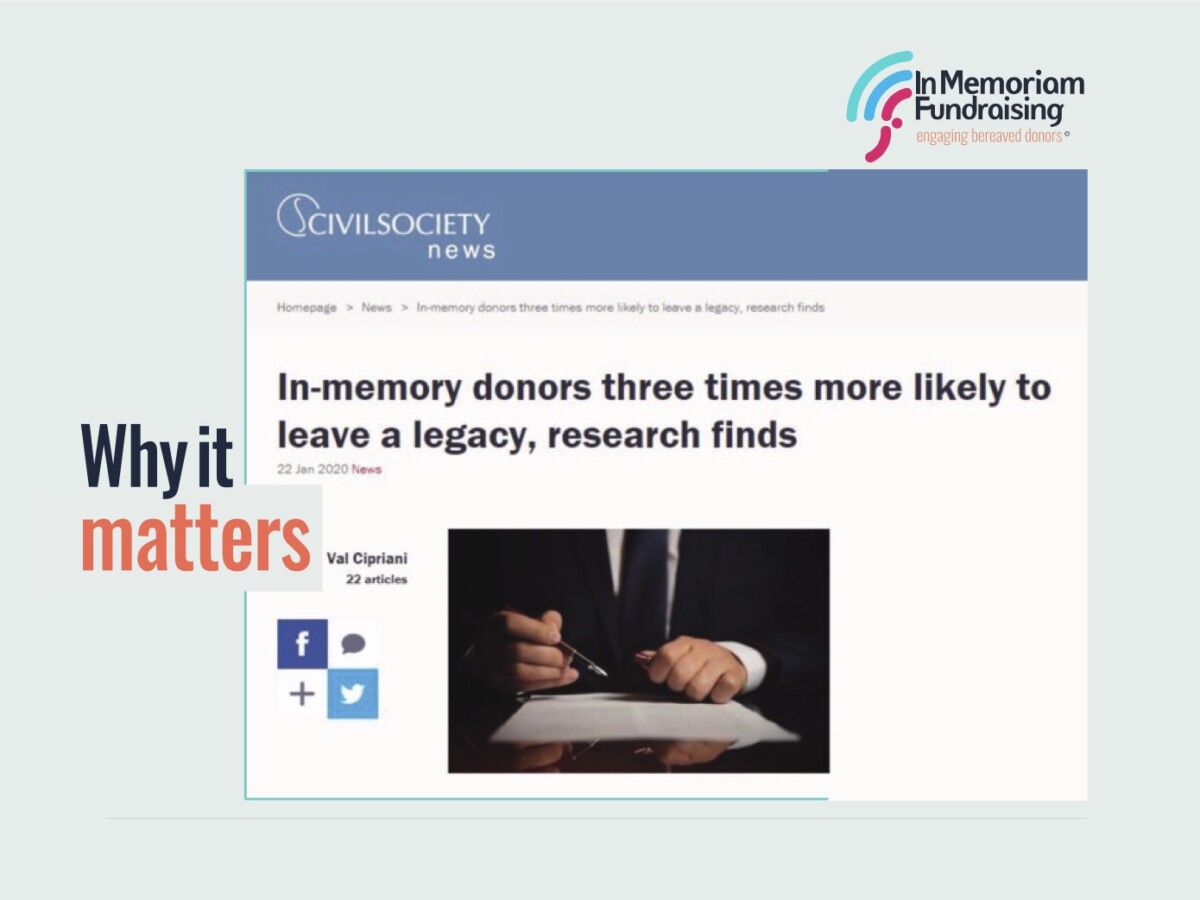
But if we get it right, have the right people, the right skills, and the offerings that resonate with our donors the rewards for all parties are terrific.
Remember
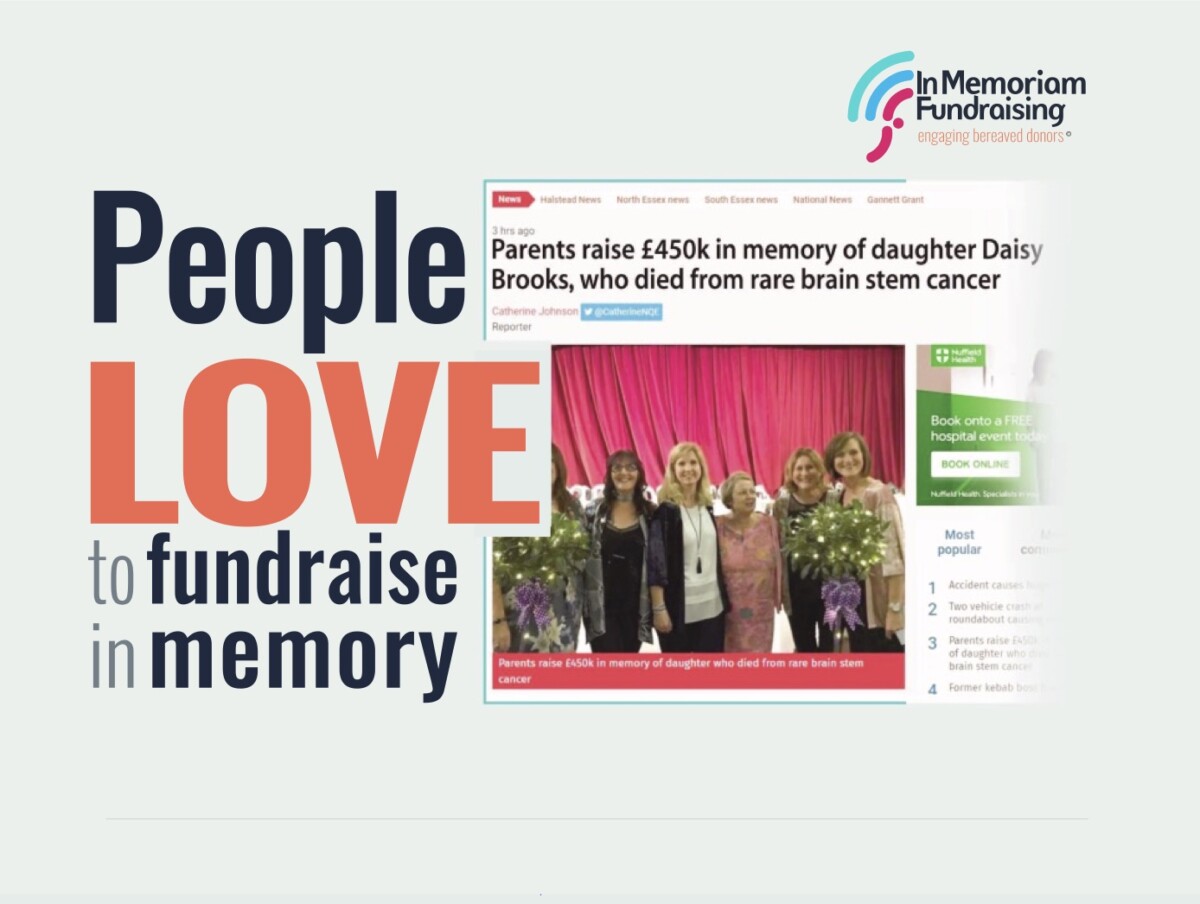
I hope the book and the training programme will give InMem fundraisers the knowledge and confidence they need to support donors, some of whom may be vulnerable but nonetheless committed, while raising significant funds for their charities.
Engaging Bereaved Donors course
Kevin Kibble (In Memoriam Fundraising) is running Engaging Bereaved Donors in central London on 16 November 2022.
Booking is open for the afternoon course.



